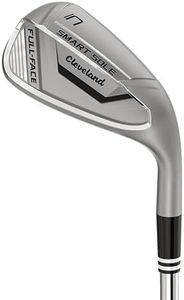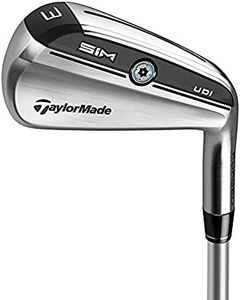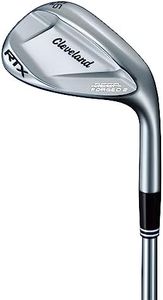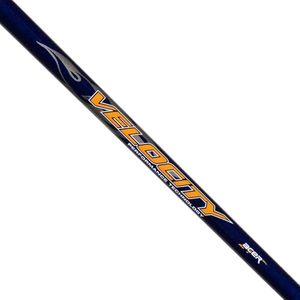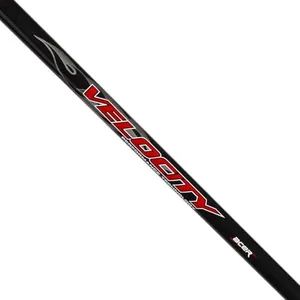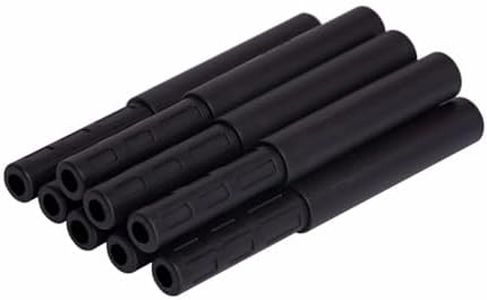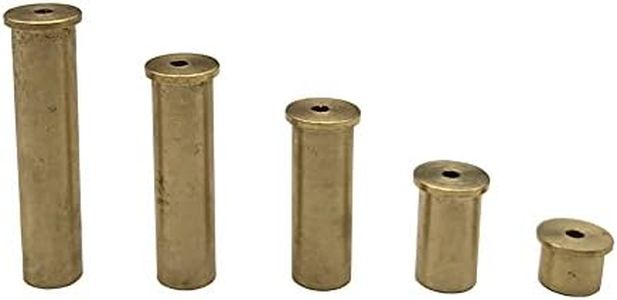We Use CookiesWe use cookies to enhance the security, performance,
functionality and for analytical and promotional activities. By continuing to browse this site you
are agreeing to our privacy policy
10 Best Iron Shafts
From leading brands and best sellers available on the web.By clicking on a link to a third party's website, log data is shared with that third party.
Buying Guide for the Best Iron Shafts
Choosing the right iron shafts for your golf clubs can have a big impact on your performance and comfort on the course. The shaft is the long, tapered tube that connects the clubhead to the grip, and it plays a huge role in determining how your club feels and performs when you swing. To find the best fit, you'll want to consider a few important factors about the shaft's construction and characteristics—each of which affects how the club moves, how much control you have, and how far the ball goes. Understanding these key specifications will help you match your shafts to your swing and playing style, making the game more enjoyable and maybe even improving your scores.Shaft MaterialShafts are primarily made from either steel or graphite. Steel shafts tend to be heavier and more durable, often giving players a better sense of control and consistency. Graphite shafts are lighter and can help increase swing speed, making them great for those who prefer a lighter feel or need extra distance. Your choice here should depend on your strength, speed, and sensitivity to vibrations—slower swing speeds or those with joint concerns often benefit from graphite, while those seeking maximum control may look to steel.
Shaft FlexFlex refers to how much the shaft bends during your swing, and it's typically classified as extra stiff, stiff, regular, senior, or ladies. Players with faster swings generally need less flex (stiffer shafts), while those with slower swings do better with more flex (softer shafts). Picking the right flex is important because too stiff or too soft a shaft can make your shots less accurate and consistent. Consider your typical swing speed and how far you hit with a 6 or 7 iron to guide your choice—faster and stronger swingers lean stiff, slower and smoother swingers opt for more flex.
Shaft WeightWeight is simply how heavy the shaft is, usually measured in grams. Heavier shafts tend to offer more control and stability but may sap energy over a long round, while lighter shafts can help generate more swing speed but may feel less steady. If you get tired during long rounds or want to maximize your swing speed, a lighter shaft might suit you. If you prioritize accuracy, a heavier shaft might feel more stable. Try swinging with different weights to see which allows you to swing comfortably and consistently.
Shaft LengthShaft length can affect your posture and how consistently you strike the ball. Standard shaft lengths work for most people, but if you are especially tall, short, or have an unusual posture, you may need a longer or shorter shaft. The right length should allow you to take a natural posture at address with the sole of the club flat on the ground. Getting fitted or checking your set-up in a mirror can help you see if your clubs are the right length for your body and swing.
Kick Point (or Bend Point)Kick point refers to the part of the shaft that bends the most when under load. A high kick point produces a lower ball flight, which can help players who naturally hit the ball too high. A low kick point skips the ball higher, which can help those who hit it too low. If you have trouble controlling the height of your shots, or feel like your ball flight is off, consider the kick point as a way to fine-tune your clubs to your style.

